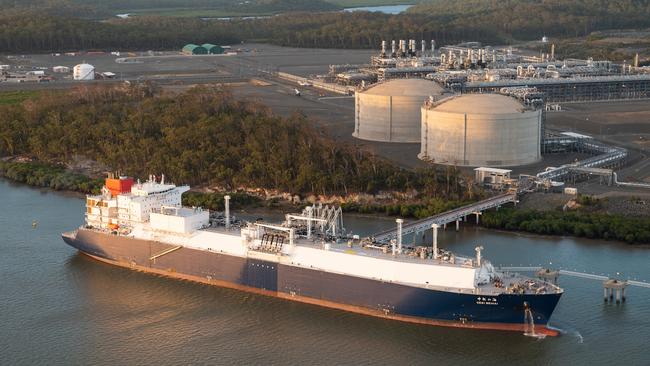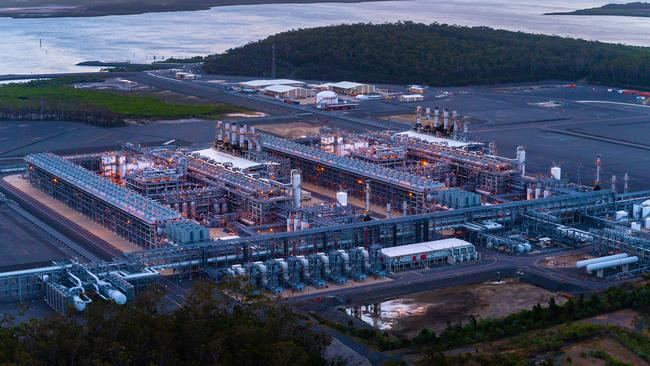Australia facing energy challenge and lagging in global LNG race
The lack of new investment and project development in Australia stands in stark contrast to the increased investment in oil and gas in other parts of the world.

Business
Don't miss out on the headlines from Business. Followed categories will be added to My News.
Australia is facing an energy challenge. Forecasts of a looming domestic natural gas shortfall on the east coast highlight the disconnect between Australia’s vast gas reserves and likely shortages that would impact households and manufacturers in years to come. The solution to this complex challenge includes regulation, pipeline capacity, storage infrastructure and, crucially, creating a predictable investment environment for energy development, including LNG.
The lack of new investment and project development in Australia stands in stark contrast to the increased investment in oil and gas in other parts of the world. In the past year, major global deals and new oil and gas projects have accelerated, driven by increased energy demand from countries aiming to reduce greenhouse gas emissions while diversifying their energy mix. Even if demand growth slows, the International Energy Forum forecasts that annual upstream oil and gas investment will need a cumulative $6.25 trillion between 2025 and 2030 to meet demand.
The sector’s capital-intensive nature requires substantial and sustained investment to ensure energy security and meet future demand. In my previous role overseeing ConocoPhillips’ European business, I saw first-hand how Europe experienced a disorderly transition resulting in energy price volatility, gas shortfalls, and a rise in geopolitical tensions. The UK, Germany and many other European countries have shifted their focus toward a more pragmatic pace prioritising secure, affordable and reliable energy, such as LNG, and enabling an equitable energy transition.
ConocoPhillips’ expectations of robust LNG demand through 2050 have led to our investments in long-term regasification and sales agreements to deliver volumes into Europe and Asia, as well as investments in the US and Qatar LNG projects. We are not alone, with many peer companies investing in new LNG supply in response to market signals of sustained global growth.

Industry investment in North American LNG supply to Asian and European markets is growing rapidly with new export terminals planned for the US west coast, gulf coast, Canada and Mexico, the latter two also set to supply the Asian market. The International Energy Agency’s 2023 Outlook noted that “projects that have started construction or taken final investment decision are set to add 250 billion cubic metres per year of liquefaction capacity by 2030, equal to almost half of today’s global LNG supply. Announced timelines suggest a particularly large increase between 2025 and 2027. More than half of the new projects are in the US and Qatar.”
It should be a concern that this investment activity is not occurring to the same extent in Australia. Australia cannot rely on past investments to supply demand through the next decades. Despite its abundance of natural resources, proximity to key markets and role to meet energy security of regional trading partners, investment will be needed to bring on new supply to meet its domestic and international demand.
Indeed, the Institute of Energy Economics, Japan, forecasts that Asia’s LNG consumption will more than double from 2021 to 2050, from 273 million to 551 million tonnes. Traditional markets like Japan, China and Korea will still rely on stable LNG supply, with other markets including Vietnam, the Philippines, India, Indonesia, Thailand and Bangladesh (collectively about 35 per cent of the global population) are now building out larger and greater LNG importing capacity.
LNG exports benefit Australia as well, by enabling reliable domestic supply. This is particularly true in a small market like Australia that on its own might not have access to the capital needed for resource development. In addition, LNG exports drive economic benefits including $93bn of export earnings last year that underpinned $16bn in direct payments to federal and state governments (taxes and royalties).

From an environmental perspective, LNG is expected to play an increasingly important role in helping meet energy transition pathway demand, as it is lower in greenhouse gas emissions intensity than alternatives such as coal. Switching from coal to gas in power generation is particularly important in Asia, where more than 50 per cent of electricity currently comes from coal. In 2023, ConocoPhillips supplied Asian markets with about 0.34 trillion cubic feet (or nearly 1 billion cubic feet per day) of natural gas and LNG. To put this in perspective, if all the natural gas and LNG we sold to Asia in 2023 had been used to replace coal for electricity generation, GHG emissions would have been reduced by about 20 million tonnes.
Australian LNG continues to have an important role to play in ensuring regional energy security and emissions reductions, which in turn is critical to stability and prosperity. As a trusted trading partner, Australia has enough undeveloped resources to meet its own needs and support those of Asian nations. But it will need competitive fiscal, regulatory and approvals regimes.
ConocoPhillips Australia was established almost two decades ago. We are a 47.5 per cent shareholder in Australia Pacific LNG (APLNG) and operate the APLNG facility on Curtis Island. We also have exploration activities throughout the country. We are committed to Australia’s future but competition for marginal capital with other business across ConocoPhillips’ global portfolio is intense. Our year-on-year investment of $1bn in Australia puts APLNG as the largest supplier of gas to the east coast market, an increasingly important role as southern gas basins decline and development restrictions in NSW and Victoria remain. Our Otway Basin exploration projects have the potential to develop further resources, which if proven commercial we plan to use to supply the southern states. Yet these projects will need to compete against other projects across our global portfolio for the required investment to deliver gas to market.
There is sustained benefit to Australia’s national interest to encourage investment from companies like ConocoPhillips, which have aligned emissions reduction ambitions supported by robust governance, with capital depth, technical proficiency and strong and safe operational records.
I look forward to working with governments to set the right conditions which will enable foreign investment in this country.
Jan-Arne Johansen is president of ConocoPhillips Australia.
Originally published as Australia facing energy challenge and lagging in global LNG race




